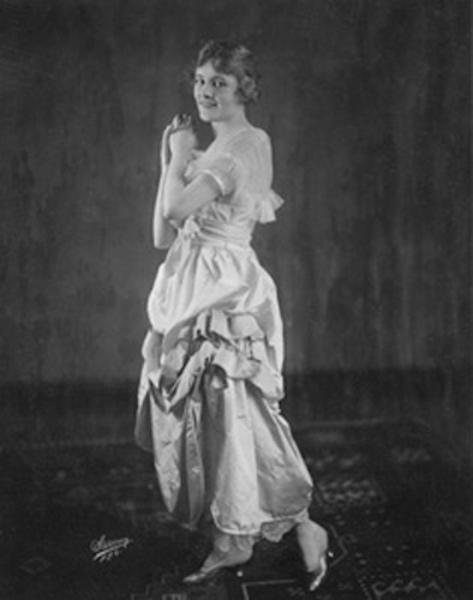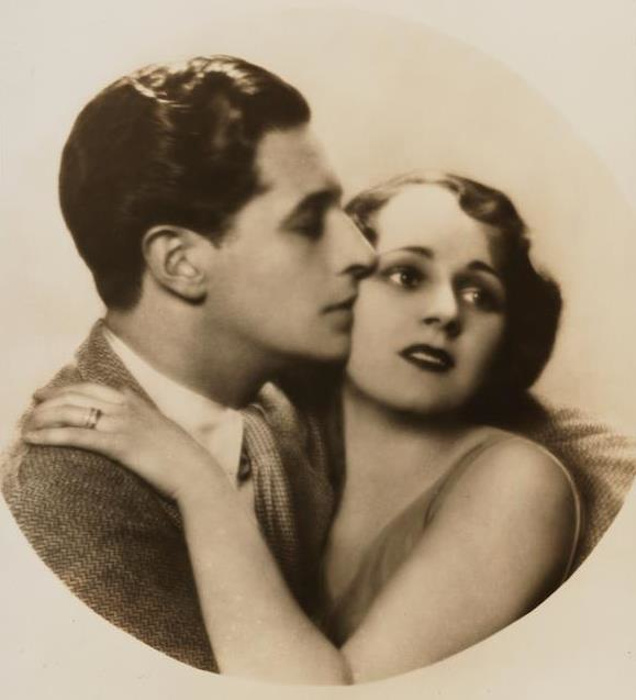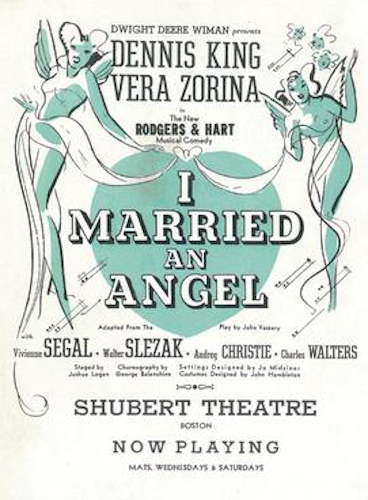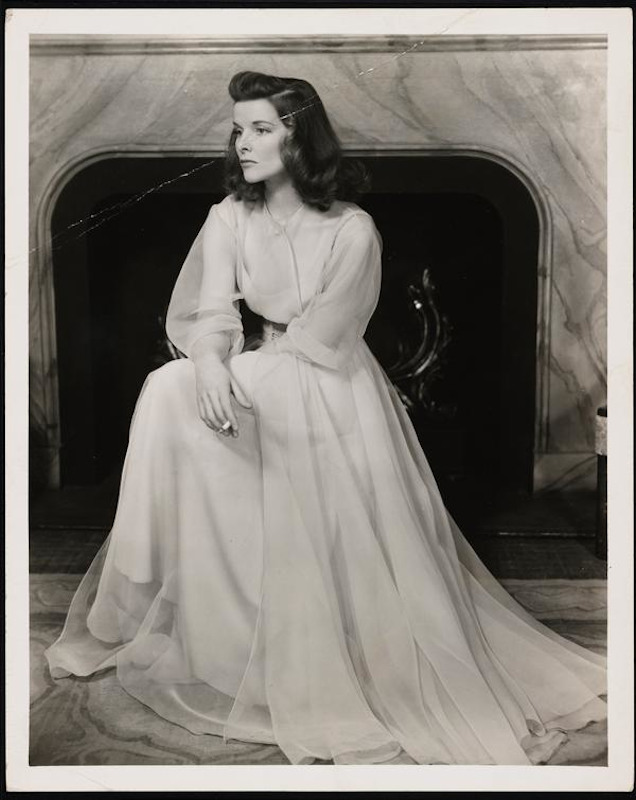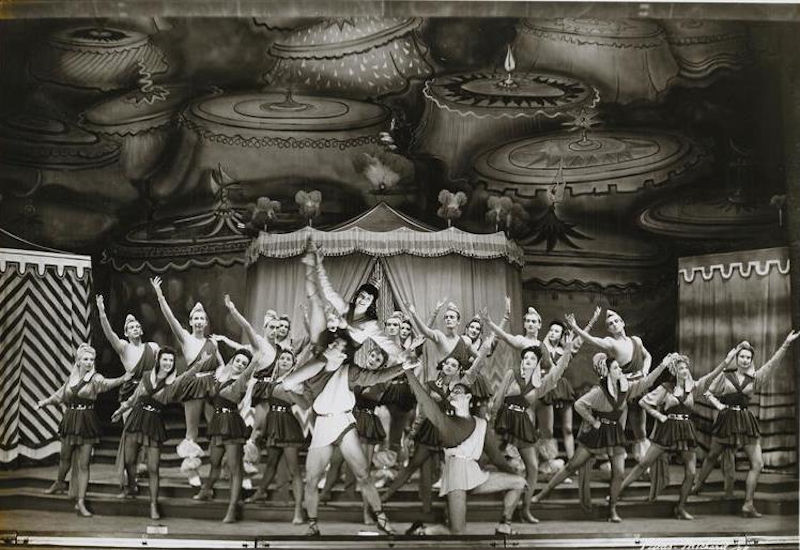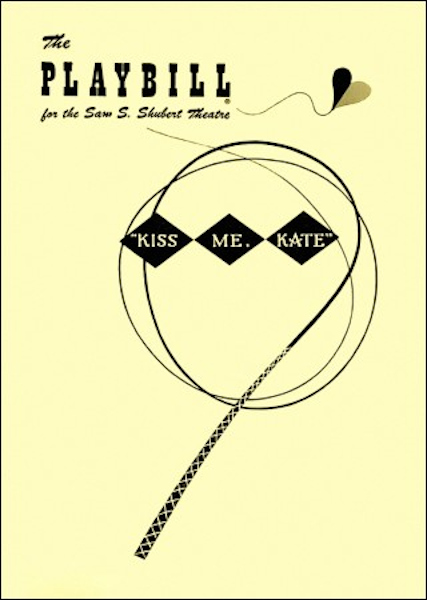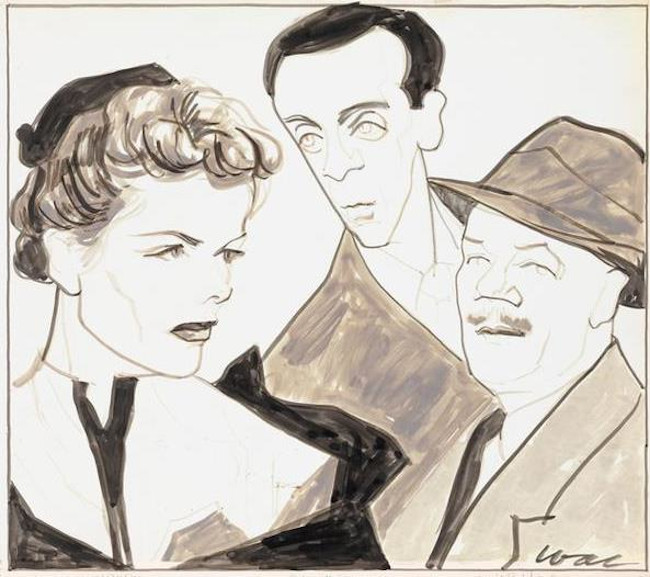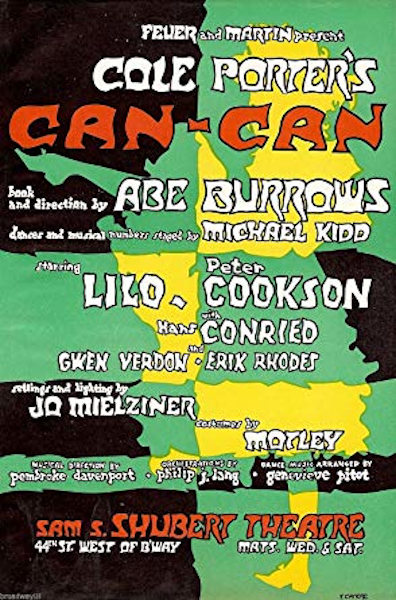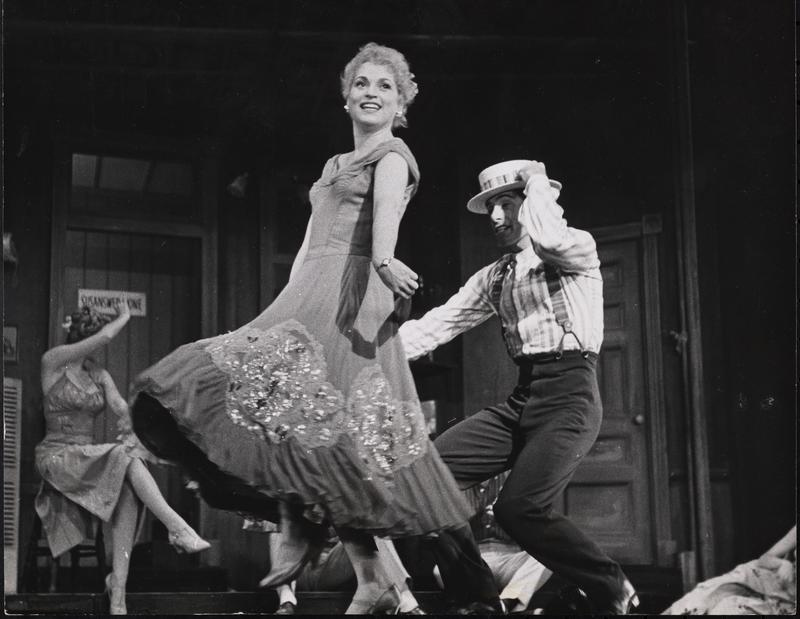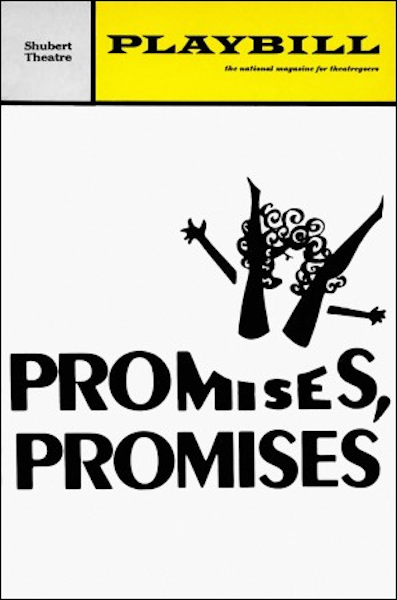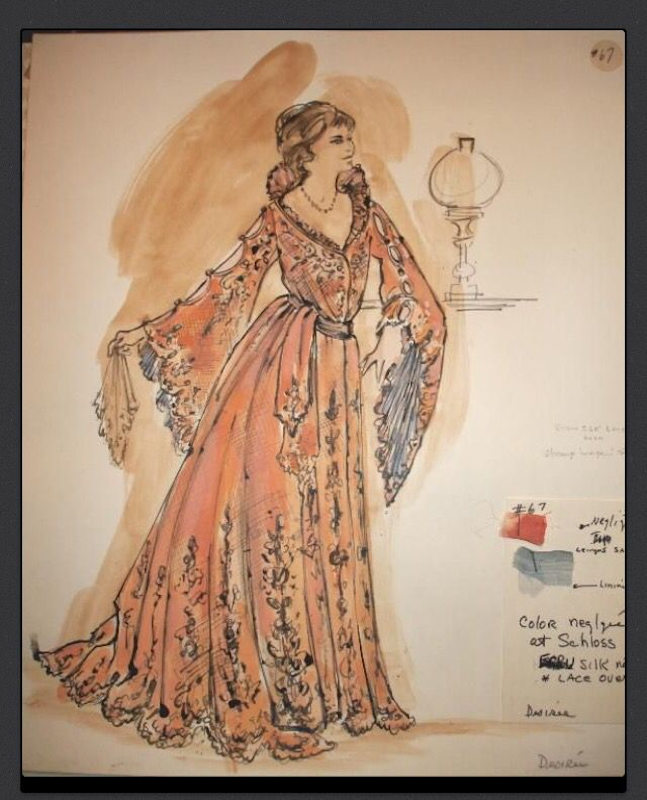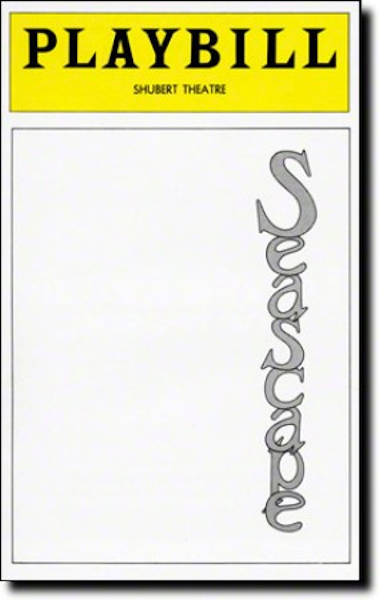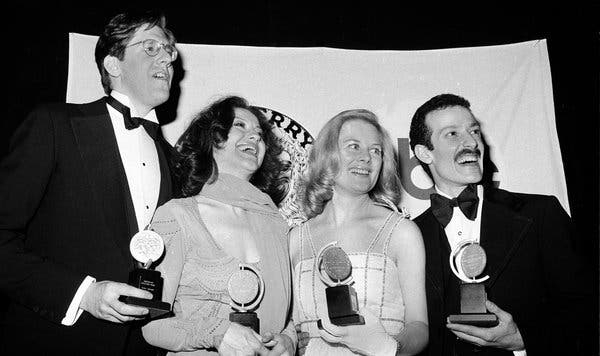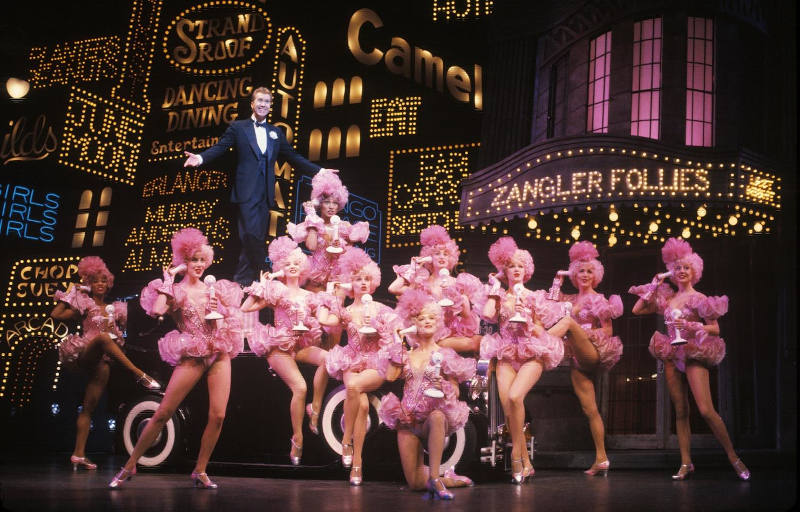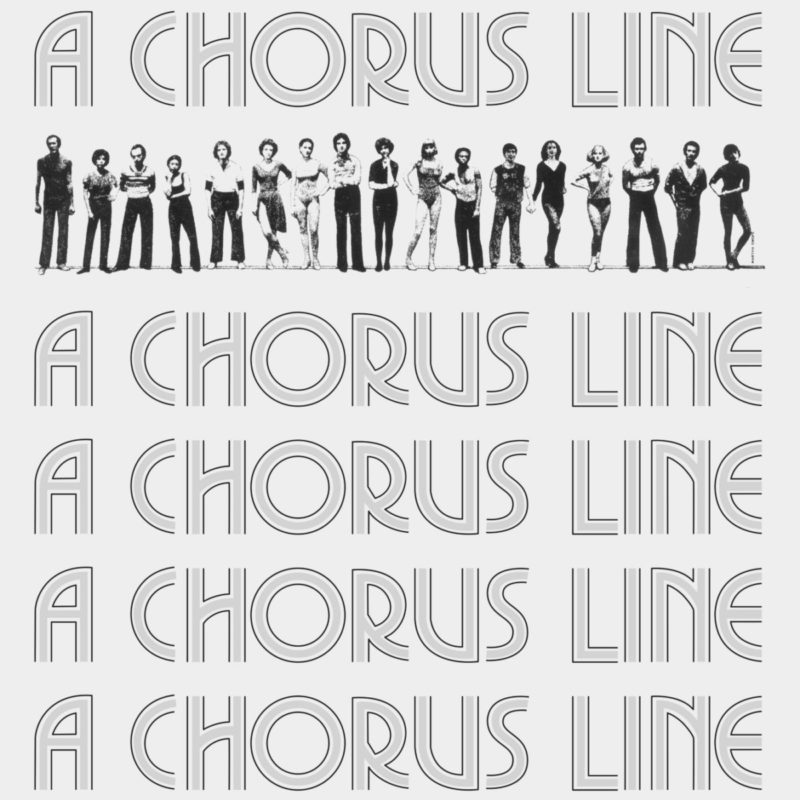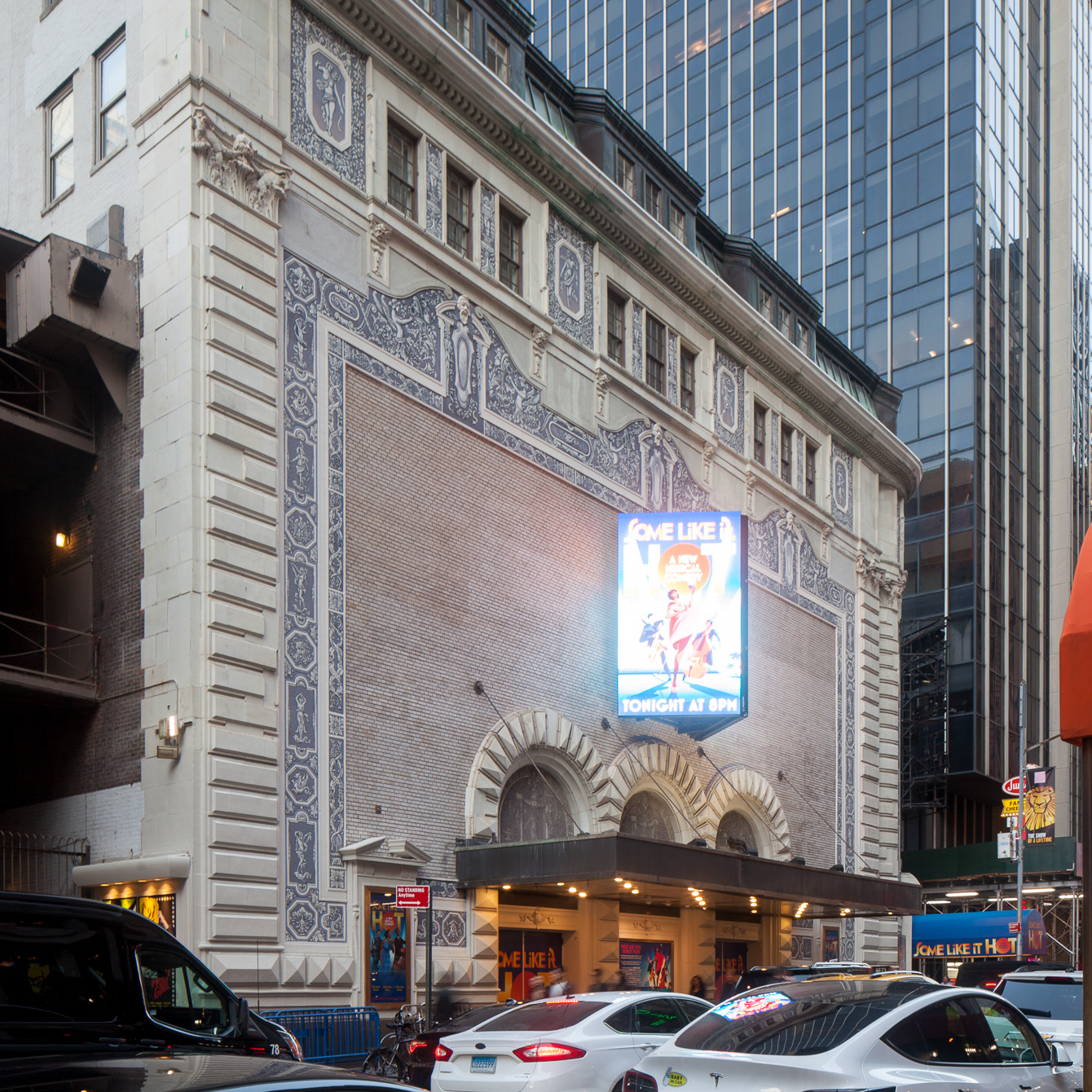
Shubert Theater
overview
Opened in 1913, the Shubert Theater has staged multiple productions involving major LGBT performers and creators, including Cole Porter, Michael Bennett, Fred Ebb, Joel Grey, Katharine Hepburn, Irene Sharaff, Jerome Robbins, Benjamin Britten, Raoul Pene Du Bois, Katharine Cornell, and Ethel Waters, among others.
The Tony Award- and Pulitzer Prize-winning musical A Chorus Line (1975-90) had its Broadway premiere here and was directed and choreographed by Michael Bennett.
History
The Shubert Theater, opened in 1913, is one of the Broadway theaters that has had the highest number of productions with LGBT associations, and a large number of these were hit plays.
Big LGBT-associated hits at the Shubert have been:
- The Philadelphia Story (1939-40) with actor Katharine Hepburn
- By Jupiter (1942-43) by Richard Rodgers and Lorenz Hart, with lyrics by Hart, and costume design by Irene Sharaff
- Bloomer Girl (1944-46), with costume design by Miles White, and with dancer James Mitchell
- High Button Shoes (1947-48, opened at the New Century Theater), choreographed by Jerome Robbins (Choreographer Tony Award), with scenic design by Oliver Smith, and costume design by Miles White
- Kiss Me, Kate (1950-51, opened at the New Century Theater), with music and lyrics by Cole Porter (Best Musical and Best Composer and Lyricist Tony Awards), staged and directed by John C. Wilson, and with actor Harold Lang
- Can-Can (1953-55), with music and lyrics by Cole Porter
- Will Success Spoil Rock Hunter? (1956, opened at the Belasco Theater), with scenic design by Oliver Smith
- Bells Are Ringing (1956-58), choreographed by Jerome Robbins and Bob Fosse, with scenic and costume design by Raoul Pene Du Bois, and with Judy Holliday (Best Actress in a Musical Tony Award)
- Take Me Along (1959-60), with production design by Oliver Smith, and costume design by Miles White, and with actor Walter Pidgeon
- Bye Bye Birdie (1961, opened at the Martin Beck Theater) by Michael Stewart (Best Musical Tony Award), with costume design by Miles White, and with actors Paul Lynde and Charles Nelson Reilly
- Oliver (1964, opened at the Imperial Theater), with book, music and lyrics by Lionel Bart (Best Composer and Lyricist Tony Award)
- Promises, Promises (1968-72), choreographed by Michael Bennett and Bob Avian
- A Little Night Music (1973) by Hugh Wheeler (Best Musical and Best Book of a Musical Tony Awards), with music and lyrics by Stephen Sondheim (Best Original Score Tony Award), costume design by Florence Klotz (Best Costume Design Tony Award), and lighting design by Tharon Musser
- The Sunshine Boys (1973-74, opened at the Broadhurst Theater), with costume design by Albert Wolsky, and lighting design by Tharon Musser
- A Chorus Line (1975-90, opened Off-Broadway at the Public Theater) by James Kirkwood, Jr. and Nicholas Dante (Pulitzer Prize for Drama and Best Musical and Best Book of a Musical Tony Awards), directed by Michael Bennett (Best Direction of a Musical Tony Award), with lyrics by Edward Kleban (Best Original Score Tony Award), choreographed by Bennett and Bob Avian (Best Choreography Tony Award), with lighting design by Tharon Musser (Best Lighting Design Tony Award), and with Sammy Williams (Best Featured Actor in a Musical Tony Award), who portrayed an openly gay Puerto Rican dancer
- Crazy for You (1994-96), with costume design by William Ivey Long (Best Costume Design Tony Award)
- Chicago (revival, 1997-2003, opened at the Richard Rodgers Theater – Best Revival of a Musical Tony Award) by Fred Ebb and Bob Fosse, with music and lyrics by John Kander and Ebb, scenic design by John Lee Beatty, costume design by William Ivey Long, and with actor Joel Grey
Shows by LGBT creators and with LGBT performers at the Shubert have included:
- The Great Pursuit (1916), with actor Jeanne Eagels
- Mr. Lazarus (1916), with actor Eva Le Gallienne
- Love o’ Mike (1917), produced by Elisabeth Marbury and Lee Shubert, and with actor Clifton Webb
- A Lonely Romeo (1919), with lyrics by Lorenz Hart and Robert B. Smith
- Greenwich Village Follies of 1920 (1920-21, opened at the Greenwich Theater), with costume and scenic design by Robert Locher and James Reynolds, and with Bert Savoy & Jay Brennan, a vaudeville team
- Greenwich Village Follies of 1921 (1921-22), with scenic design by Robert Locher and John Murray Anderson, and costume design by Locher
- Greenwich Village Follies of 1922, with Bert Savoy & Jay Brennan
- Greenwich Village Follies of 1924 (1924-25), with music by Cole Porter, and lyrics by Porter and others
- Padlocks of 1927, with costume design by Orry-Kelly and others
- And So to Bed (1927-28), with actor Emlyn Williams
- Harry Delmar’s Revels (1927-28), with actor Patsy Kelly
- The Five O’Clock Girl (1928), with female impersonator Arthur C. Budd (opened at the 44th Street Theater)
- The Furies (1928) by Zoe Akins, directed by George Cukor, and with actor Laurette Taylor
- A Night in Venice (1929), with costume design by Erte, George Barbier, and Ernest Schrapps
- The Street Singer (1929-30), a Busby Berkeley musical with costume design by Orry-Kelly and George Barbier, and with actor Cesar Romero
- Bitter Sweet (1930, opened at the Ziegfeld Theater), with book, music, lyrics, and staging by Noel Coward
- Symphony in Two Flats (1930) by Ivor Novello (who also acted in it)
- Peter Ibbetson (1931), by Constance Collier and John N. Raphael, and staged by Collier
- Gay Divorce (1933, opened at the Ethel Barrymore Theater), with music and lyrics by Cole Porter
- Idiot’s Delight (1936), with actors Alfred Lunt and Lynn Fontanne
- Amphitryon 38 (1937-38), with actors Alfred Lunt and Lynn Fontanne
- Babes in Arms (1937) by Richard Rodgers and Lorenz Hart, with lyrics by Hart
- I Married an Angel (1938-39) by Richard Rodgers and Lorenz Hart, with lyrics by Hart, and with actor Charles Walters
- The Seagull (revival, 1938), with actors Alfred Lunt and Lynn Fontanne
- Higher and Higher (1940), with lyrics by Lorenz Hart, and with actor Lee Dixon
- Hold On to Your Hats (1940-41), with scenic and costume design by Raoul Pene Du Bois
- Pal Joey (1941, opened at the Ethel Barrymore Theater), with lyrics by Lorenz Hart, and with actor Van Johnson
- Liberty Jones (1941), with music and lyrics by Paul Bowles, and scenic and costume design by Raoul Pene Du Bois
- They Walk Alone (1941), with music by Benjamin Britten, and with actor Elsa Lanchester
- The Doctor’s Dilemma (revival, 1941), staged by Guthrie McClintic, and with actor Katharine Cornell
- Candida (revival, 1942), staged by Guthrie McClintic, and with actor Katharine Cornell
- Laugh Time (1943), with actor Ethel Waters
- My Romance (1948-49), staged by and book and lyrics by Rowland Leigh
- Lend An Ear (1949, opened at the National Theater), with scenic, costume and lighting design by Raoul Pene Du Bois, and with actor William Eythe
- I Know My Love (1949-50), with actors Alfred Lunt and Lynn Fontanne
- Paint Your Wagon (1951-52), with scenic design by Oliver Smith, and with actor James Mitchell
- The Millionairess (revival, 1952-53), with actors Katharine Hepburn, Cyril Ritchard, and Robert Helpmann
- The Gay Life (1961-62), with scenic design by Oliver Smith
- I Can Get It for You Wholesale (1962), with actor Harold Lang
- Bajour (1964-65), with scenic design by Oliver Smith, and costume design by Freddy Wittop, and with Michael Bennett as a dancer
- The Roar of the Greasepaint – The Smell of the Crowd (1965), with costume design by Freddy Wittop, and with actor Cyril Ritchard
- Ivanov (revival, 1966), directed by and with John Gielgud, with scenic and costume design by Rouben Ter-Arutunian
- Seascape (1975) by Edward Albee (Pulitzer Prize for Drama)
- The Constant Wife (revival, 1975) by W. Somerset Maugham
- Big (1996), with costume design by William Ivey Long
Entry by Jay Shockley, project director (August 2019, with multiple additions).
NOTE: Names above in bold indicate LGBT people.
Building Information
- Architect or Builder: Henry B. Herts
- Year Built: 1912-13
Sources
“The 1st List of: Gay/Lesbian/Bi Industry People, Both in Front and Behind the Camera,” www.imdb.com, May 31, 2013.
Adam Hetrick, “The Work of Broadway’s Gay and Lesbian Artistic Community Goes on Display Nov. 14 When the Leslie/Lohman Gay Art Foundation Gallery Presents ‘StageStruck: The Magic of Theatre Design’,” Playbill, November 14, 2007.
Internet Broadway Database.
Shubert Theater Designation Report (New York: Landmarks Preservation Commission, 1987).
Do you have more information about this site?
This project is enriched by your participation! Do you have your own images of this site? Or a story to share? Would you like to suggest a different historic site?
